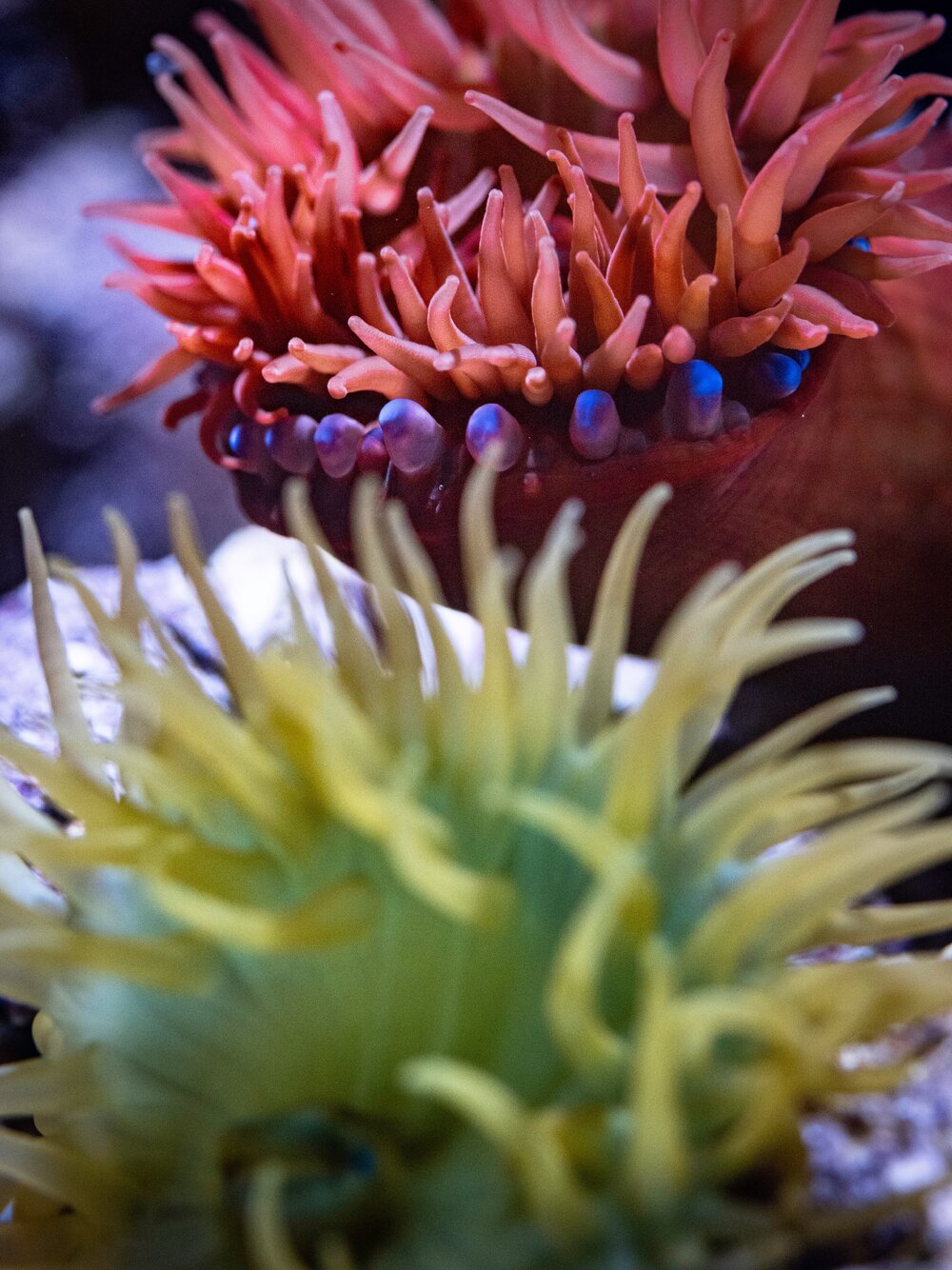Only about 1cm, a little baby! Anything bigger would be awesome but would probably be a bit too destructive.How big is the crab?
Chalk, from a super rocky stretch of beach near the white cliffs of dover. I did have concerns that the rocks would make the water too alkaline but I'm keeping an eye on the ph readings and all is well so far. Also the rockpools where most of the tank's inhabitants came from were all chalk rocks, so I figured using rocks from their natural enviroment couldn't do any harm! but still keeping an eye on ph.What type of rock is it? Where did you collect? (So I can get my geology on)
Why locally sourced rocks, but not use sand from the beach too?
Also I really wanted to use this liverock as it was covered in different algae including a whole lot of purple coralline, lots of little barnacles and all sorts of life on them too so it was great for getting the tank's ecosystem started. And about the sand, I could've definitely used some natural sand but I already had this coral sand, I also liked the white look, made me feel like Im keeping a tropical reef!
Nope, all the anemones would most probably be fine under any lighting, especially the beadlets. The only partly photosynthetic species in the tank are the Snakelocks, but with supplementary feeding they should be fine too.Do you have to use a blue light for these?
Im not too sure to be honest, I've always used it immediately after collection. But I wouldn't want to use it after more than a week maybe, you never know how much die off you could get from any organisms or phytoplankton in the water, I could imagine that it could go bad with time. But im really not sureIf I collected sea water how long could I store this for? I would keep it aerated, and kept in darkness?








